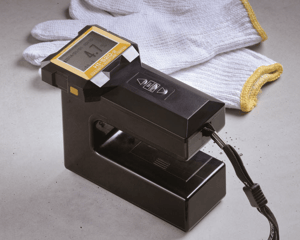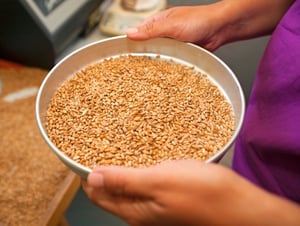 Coffee is far and away one of the most popular, most beloved beverages across the globe. Connoisseurs of this drink spend years perfecting their knowledge and refining their palates to appreciate the unique flavor profile of each blend, origin, source point, and roast type.
Coffee is far and away one of the most popular, most beloved beverages across the globe. Connoisseurs of this drink spend years perfecting their knowledge and refining their palates to appreciate the unique flavor profile of each blend, origin, source point, and roast type.
High-quality coffee is the result of a careful, meticulous processing technique—one in which the process and preparation are directly tied to the taste and experience.
There are likely as many different approaches to processing coffee beans as there are brands and roasteries, including the wet and dry methods for drying the fruit and preparing the beans. This article will take a look at the two main ways coffee beans are processed, the importance of moisture content, and how Kett’s laboratory-quality moisture meters can refine the drying process.
Harvesting Coffee Cherries and Processing Coffee
As you likely know, once we pick up a bag of coffee grounds or beans, we don’t have to do much more than level out a few scoops of grounds, add water to brew, and pour a cup. But before it’s sent out to coffee shops and grocery stores, coffee is methodically harvested and processed. The steps of making coffee are referred to as processing, and include every step from harvesting coffee cherries to the moment coffee beans are ready for consumption.
Today, coffee processing typically involves harvesting the raw material—either the entire coffee plant or just the cherries—removing all the layers of the cherry that surround the actual green coffee bean that’s then roasted and used for brewing caffeinated cups.
If you are involved with coffee growing or processing, you’re probably already familiar with the concept of harvesting ripe coffee cherries from coffee plants. Once these cherries are ready for processing, the coffee beans can be extracted through one of two methods:
- The Dry Method, in which the berries of the coffee shrub are dried before extracting the beans
- The Wet Method, in which coffee is processed through fermentation or some other kind of wet process
While the actual steps of removing the beans from the cherry are not all that different between these two methods, the finished products are quite varied in flavor. Beans processed through the dry method, for example, are far sweeter than those processed via the wet method.
Regardless of which type of coffee processing method you use, both wet and dry methods call for several of the same steps and techniques:
- Both most commonly rely on the sun for the drying process
- Both require machinery to hull the beans
- Both result in beans that must be cleaned and sorted before they undergo further processing
Coffee Processing: The Dry Method
The dry method of coffee processing is much what it sounds like. It starts by drying the whole cherry, with all of the fruit that surrounds the bean still intact. This is the oldest and most traditional way of processing coffee—and also the simplest method that requires the least equipment.
Most commonly, coffee fruit is dried by the sun, but some larger producers may also dry coffee cherries with a machine dryer, or via some combination of sun-based and machine-based drying. Coffee cherries are cleaned, dried, and then hulled to harvest the bean (seed) inside.
Cleaning
First, coffee fruit is sorted to remove any fruit that is unripe, damaged, or overripened. During this phase of processing, dirt, soil, and other debris are also removed. Ripe cherries then float through washing channels where the fruit is cleaned. Those cherries that do not float (and are not usable for the bean inside) are separated out.
Drying
Next, coffee cherries are laid to dry in the sun or are dried through drying machines that rely on hot air for drying. Either way, coffee producers turn the fruit with rakes to ensure even drying. Drying usually takes between 15 to 20 days, but may take as long as four weeks for the cherries to reach their ideal moisture content levels. For cherries that are dried in the sun, this drying time is entirely dependent on weather conditions.
Mechanical hot air dryers can speed up the drying process and are most frequently used by larger producers only after the coffee fruit has laid in the sun for a few days.
Sun-dried coffee fruit is most commonly dried on brick or concrete surfaces, or on elevated tables called “drying beds” that are slightly raised from the ground and made from mesh netting to promote air circulation and support drying the underneath side of the fruit. The berries are also covered at night to prevent moisture absorption.
Hulling
When the coffee cherries have reached their optimal moisture content levels, they are hulled to extract the dried green coffee bean, often with a hulling machine. All outer layers of the coffee cherry are removed, including the coffee cherry skin, pulp, and husk. Once the dried beans have been hulled, they are ready for the next steps, which include milling, roasting, packaging, and grinding.
Coffee Processing: Comparing the Wet Method
The wet method of coffee processing is a much newer way to extract the coffee bean from the skin of the coffee fruit, and relies on water to move the coffee from one processing step to the next—and also to extract the beans.
Cleaning
Coffee is processed via the wet method much like the dry method; by cleaning the cherries and removing the underripe and overripe cherries, as well as any fruit that is damaged or not up to standard.
Pulping
Then, cherries are sent through a pulping machine, which squeezes the bean from the fruit. This also helps to further sort the quality cherries from underripe ones, as the beans do not separate from the pulp the same way ripe ones do.
Fermentation
This pulping process leaves the beans covered in a sticky substance from the fruit pulp known as mucilage. Extracted beans have to be soaked and stirred in water for around 24 hours to remove any traces of this mucilage that might sour the flavor and impact the overall quality of the beans. This process is known as fermentation and is critical to the quality of the final product. As a result, fermentation must be carefully monitored.
After fermentation, coffee beans are thoroughly washed in clean water so only the beans are left, with no traces of mucilage remaining.
Drying and Hulling
Next, beans must be dried in the sun for several days before they are ready for the next stage of processing: sorting beans into different grades based on their quality. The beans acquired through this wet method of processing are often referred to as parchment coffee, so named for the hard, silvery, and papery skin that’s still attached during this stage. Because of this, the beans must be dehulled after drying so that only the green coffee bean remains, ready for milling, roasting, and further processing.
Achieving Optimum Moisture Content for Peak Quality
Whether a coffee producer relies on the wet or dry method to extract the coffee bean from the surrounding fruit, moisture levels are a critical factor in the success and quality of the final product.
With the dry method, coffee cherries must be dried intact until they reach a moisture content of 11 percent or less. The outer layer dries, turns black, and becomes brittle, which is why it is so easy to remove the outer layers from the beans.
When using the wet method of coffee production, extracted parchment coffee beans must again be dried until they reach the ideal moisture percentage content—somewhere between 11 and 12 percent.
With either method, coffee must then be stored without any excess moisture. It is crucial that during and after drying, coffee producers attain the desired moisture content levels, or they run the risk of allowing their harvest to become moldy—which will translate to a final cup that has overpowering musty and moldy notes rather than sweet or bold ones. Kett’s PM650 Instant Grain and Seed Moisture Meter is simple to use and nondestructive and includes multiple preset factory calibrations that help assess moisture levels throughout the coffee processing progression, including:
- Raw coffee for dried coffee cherries
- Green coffee bean moisture levels
- Roasted coffee bean moisture levels
- Parchment coffee moisture levels for Arabica coffee
- Parchment coffee moisture levels for Robusta coffee
Additionally, the PM650 Moisture Meter can take highly accurate, factory-caliber moisture readings in the field without the need for processing like husking and grinding, which can take quite a bit of time. This dramatically reduces the time for each test cycle, which means you can get back to work faster with less time needed to prepare for each moisture test.
With Kett’s Instant Grain and Seed Moisture Meter, anyone on your team can accurately assess moisture levels with very little training and very little preparation time.
Want to discover more about how Kett can support your coffee drying and processing operations? Contact us today!


